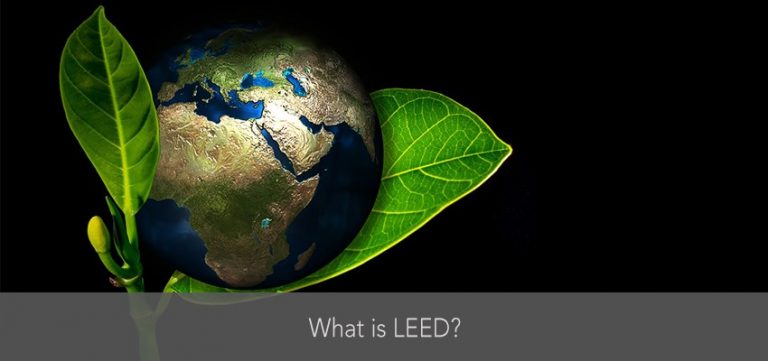What is the LEED?
With the evolution of green technologies and environmental challenges, we are becoming more conscious of the environment, and in some cases trending green. The green trend is spreading from recycled material themed weddings to paper going digital and buildings being created with the environment in mind.
When it comes to building green, LEED (Leadership in Energy and Environmental Design) has taken the reigns in changing the way people think about how buildings and communities are being designed, constructed, maintained and operated around the world.
LEED was developed by the U.S. Green Building Council (USGBC), as a green building certification that certifies the best green building strategies and practices. There are four levels of the certification, the higher the points earned, the higher the certification. The levels starting with the lowest are as follows: Certified, Silver, Gold & Platinum.
The LEED Certification is flexible enough to be applied to all project types. In order to achieve the certification the successful completion of a rating system must be done. There are five different rating systems to address the various project types:
- Building Design & Construction
This rating is applicable to buildings that are newly constructed or are going through a major construction.
- Interior Design & Construction
Applicable to projects that are a complete interior fit-out.
- Building Operations & Maintenance
Applies to existing buildings with improvements or little to no construction
- Neighborhood Development
This is applicable to new land development projects or redevelopment projects with residential uses, nonresidential uses or a mix. The projects can be at any stage of the development process from beginning to end.
- Homes
Single family homes, low-rise multi-family (one to three stories) or mid-rise multi-family (four to six stories) are all eligible for this rating.
Within each rating system there are a number of credit categories that must be completed in order to earn the certification. The number of points earned in each credit category determines the level of the LEED certification. The credit categories are as follows:
-
-
-
-
-
- Location & Transportation
- Materials & Resources
- Water Efficiency
- Energy & Atmosphere
- Sustainable Sites
- Indoor Environmental Quality
- Innovation
- Regional Priority Credits
- Smart location & linkage
- Neighborhood pattern & design
- Green infrastructure & buildings
-
-
-
-
LEED’s goal is to help building owners and operators solve problems, be more efficient, improve performance and maintenance while considering the environment. To learn more about LEED visit them at http://www.usgbc.org/leed. If you are interested in learning more about creating a green environment, contact IVCi for more information.



